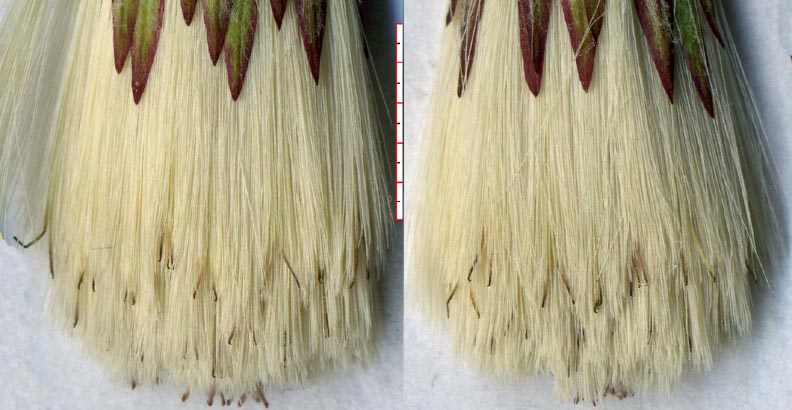
Both sides of head; only style branches apparent.


A single plant selected for comparison, on a high ridge above the Deadman's Creek valley at the SE corner of Purola Preserve, lacked even vestigial ligules. Inspection of all florets of a dissected head revealed two types of pistillate florets with tubular/filiform corollas:



Plants of types I & II lack these long–tubular corollas (with rare exceptions one was noted). To test the possibility that these might correspond to the reduced/vestigial ligulate corollas of type III all florets except those at the periphery were removed from a longitudinal half section of a head. The remaining peripheral florets were then examined for length of the corolla. 8 of 9 florets had long–tubular corollas; 1 was short–tubular – a typical eligulate female floret. Then all extracted florets from inside the head were examined. Only perfect (central) florets and eligulate female florets with short corollas were found. The total number of long–tubular florets for the head was 17.
The test provides strong support for the view that these long–tubular corollas correspond to the reduced/vestigial ligulate corollas of type III. The heads are trimorphic, not bimorphic.
A count of all florets from a type IV head compared with the averages for a type III head with reduced ligules supports the interpretation of the long–tubular florets as a distinct peripheral floret form.
| Type IV | averages for type III | |
|---|---|---|
| long–tubular, pistillate | 17 | 18 (reduced ligules) |
| short–tubular, pistillate | 46 | 39 |
| central perfect | 9 | 12 |
| total: | 72 | 69 |